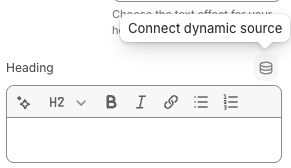Using metafields and metaobjects
Metafields and metaobjects let you extend Shopify with structured custom data, and surface that data in your theme without writing custom Liquid code. They can feel a little opaque at first, so this guide gives you a practical starting point.
Metafields
Metafields are extra fields you attach to core Shopify resources (products, variants, collections, pages, blog posts, orders, customers, etc.) when the standard admin fields are not enough.
Typical use cases:
- Ingredient or materials list
- Launch / release date
- Capacity / technical specs
- Care or usage instructions
- Embed (video, PDF, external URL)
- Internal reference or merchandising flags
Think of a metafield as: “I wish the product had a place to store X” → create a metafield definition → fill it per item → optionally display it in the storefront.
Because metafields are defined once (with a namespace, key, and type) and then reused, you can rely on consistent structure across your catalog.
Getting started
If you have not created metafields before, start with one simple, high‑value field and iterate.
Example workflow ("Care guide" per product)
- In Shopify admin, create a product metafield definition named “Care guide” (text / rich text depending on needs).
- For each product, populate the care instructions.
- In the theme editor, connect that metafield to a section or block so it renders on the product page.
Official docs
See the Shopify metafields guide. For hands‑on assistance configuring metafields, contact Shopify Support.
Displaying metafields in the theme editor
After a metafield is defined and populated, open the theme editor, navigate to the relevant template (e.g. Product), select a section or block, and look for the small “database” (dynamic source) icon next to a compatible setting. Clicking it opens a picker of available metafields for that context.

Notes & constraints
- The metafield’s type must be compatible with the setting type. An image metafield can only connect to an image setting, not a text field.
- Some file types (e.g. a PDF metafield) are not yet directly connectable via the UI.
Variant metafields
Variant metafields cannot currently be wired up through the theme editor; implementing those typically requires a developer to access them in Liquid or via JavaScript.
If you hit a limitation, outline your use case and share it with Shopify Support; aggregated feedback drives feature prioritization.
Metaobjects
Metaobjects are structured entries composed of multiple metafields grouped under a custom “object” definition (think: a lightweight content type). Each metaobject entry is an instance of that definition.
When to adopt metaobjects
Adopt metaobjects once you notice repeating clusters of related metafields that always appear together (e.g. a “Fabric” entity with name, composition, care icon, description) or you require a reusable catalog (store locations, size guides, ambassadors, ingredients, etc.).
When to consider them:
- You find yourself creating many parallel metafields that always travel together (e.g. a “Fabric” object with name, composition, care icon, description).
- You need a reusable catalog of structured items (e.g. size guides, store locations, ambassadors, ingredient glossary) that products or pages can reference.
For stores just getting started, simple single metafields usually cover most needs. As your data model becomes richer and you need repeatable multi‑field entities, metaobjects start to pay off.
Further reading
Learn more in the Shopify metaobjects documentation. Support for setup questions is again available via Shopify Support.
Deciding which to use
| Need | Start with |
|---|---|
| One extra piece of data per resource | Metafield |
| A bundle of several fields that belong together | Metaobject |
| Reusable list of structured entries referenced by products/pages | Metaobject |
| Quick one‑off enhancement | Metafield |
Good practices
Good practices
- Name clearly: use a namespace + key pattern that groups related fields (e.g.
care.guide). - Choose the most specific type (e.g. date, file, URL, integer) instead of generic text where possible for better validation and theme compatibility.
- Document internally which metafields power which theme areas to avoid accidental deletion.
- Start small; avoid creating dozens of metafields before you prove they are needed.